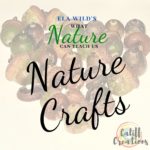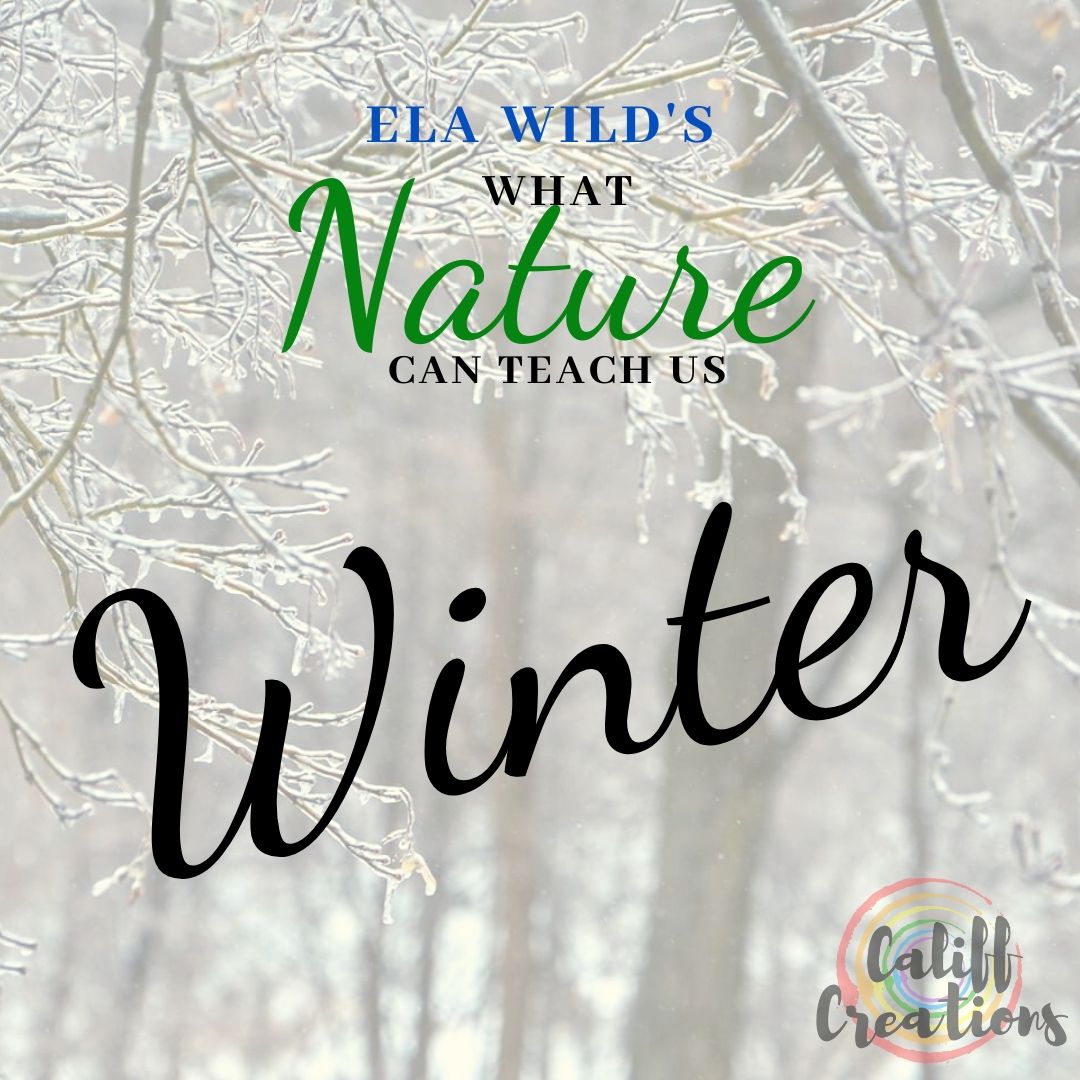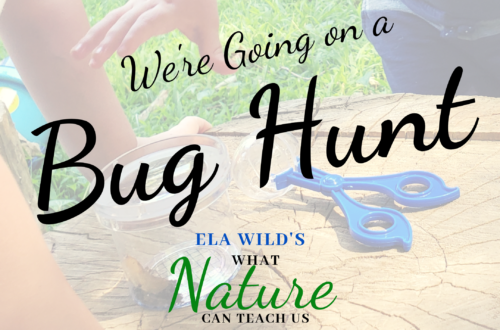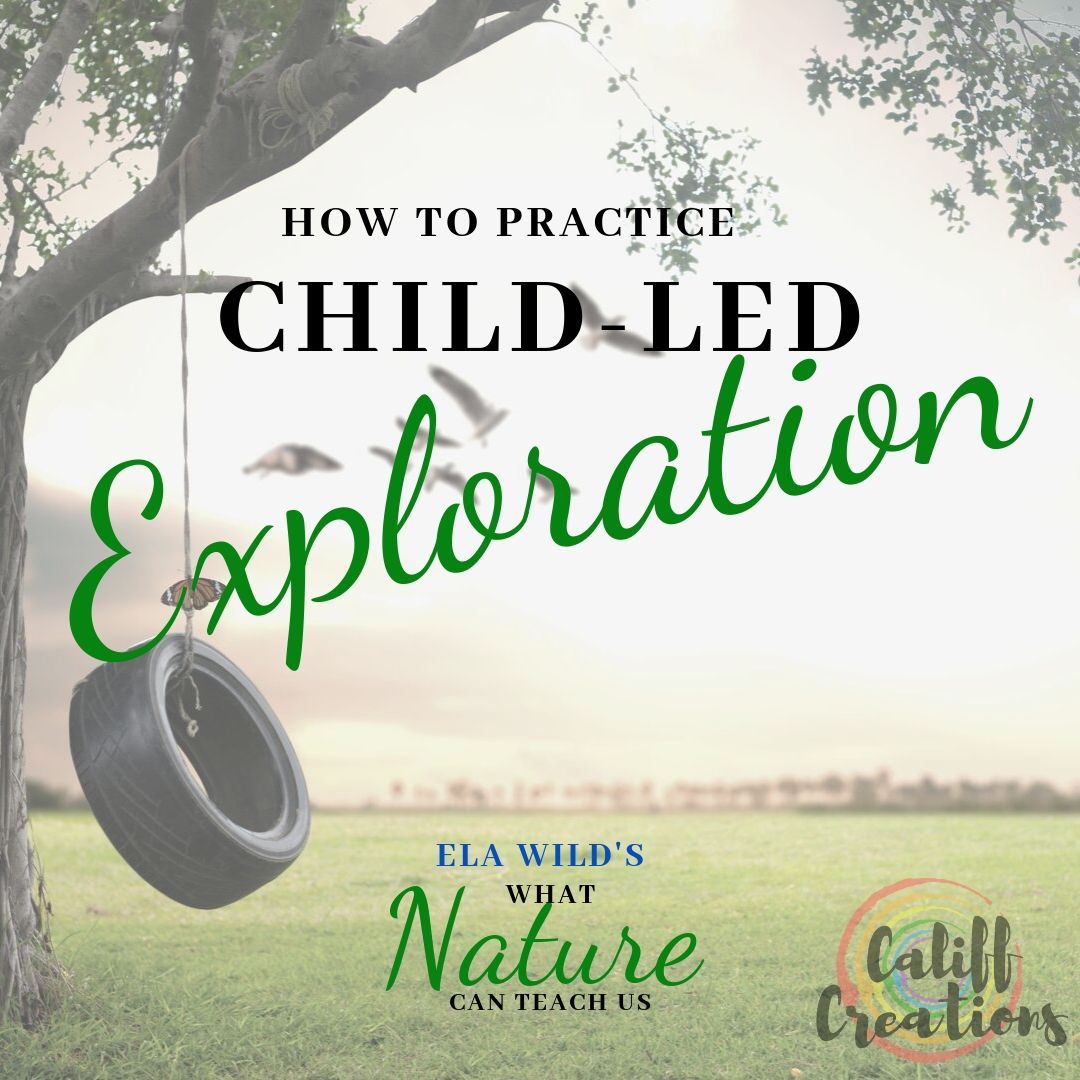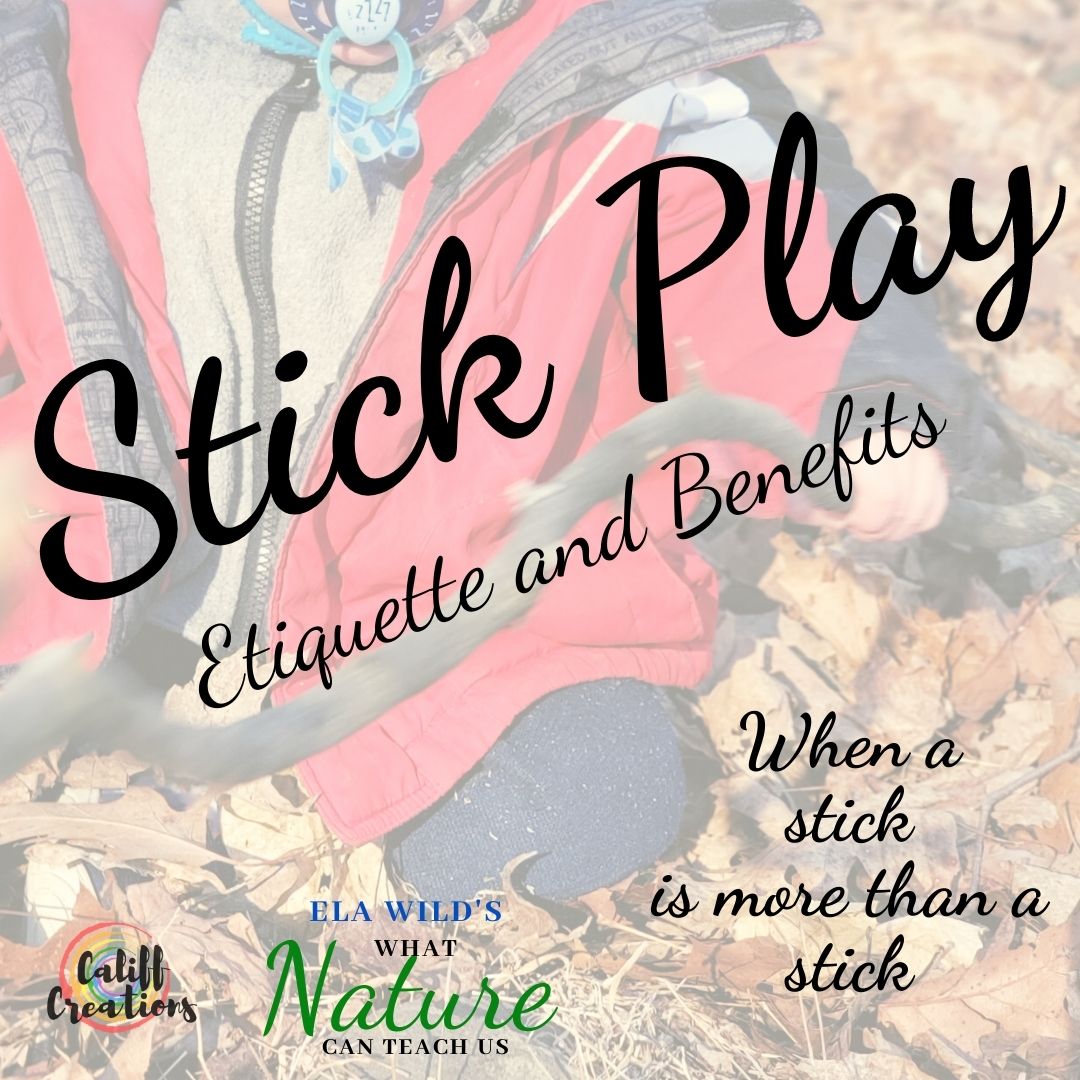
Sticks – What Nature Can Teach Us
What is your reaction when your child picks up a stick? Do you immediately fear injury? Many parents do. Playing with sticks is a natural childhood activity and, while there is a risk of injury, the benefits far outweigh that risk. You could call the stick the “original toy” since kids have been playing with sticks since long before we had dolls and blocks. With a little stick play etiquette and a splash of creativity, a stick can transform into anything.
A Word on Stick Play Safety
I’d be doing you a disservice if I didn’t mention the risks involved in playing with sticks. Images of kids hitting each other or poking faces with sticks race through parents’ heads as they fear the worst. It’s important to not let these fears limit your child’s exploration. In place of a “no-stick rule”, try teaching some stick play etiquette.
- Stick length: If the stick is longer than your arm, one end of the stick must stay on the ground. (You can still build forts with it or drag it around, but more on that later.)
- Choose your sticks wisely and make sure they are appropriate for the game (example: you don’t want one with a bunch of extra branches sticking off it to act as a magic wand.)
- You can hit trees, rocks, and the ground, but don’t hit people or animals with sticks.
- When playing a stick game with friends, make sure that everyone agrees on the rules of the game BEFORE you start to play. This teaches kids to work together, use their imagination, and compromise so that everyone is happy with the game.
The riskiness involved in playing with sticks is all in how the sticks are used.
If you teach stick play etiquette, kids can learn to play with sticks responsibly. Kids have to learn the rules and stick to them!
That’s a great lesson in responsibility and communications with friends, straight out of nature! Now, let’s explore how we can learn to expand our imagination, encourage curiosity, and even learn basic engineering, math, and literacy skills.
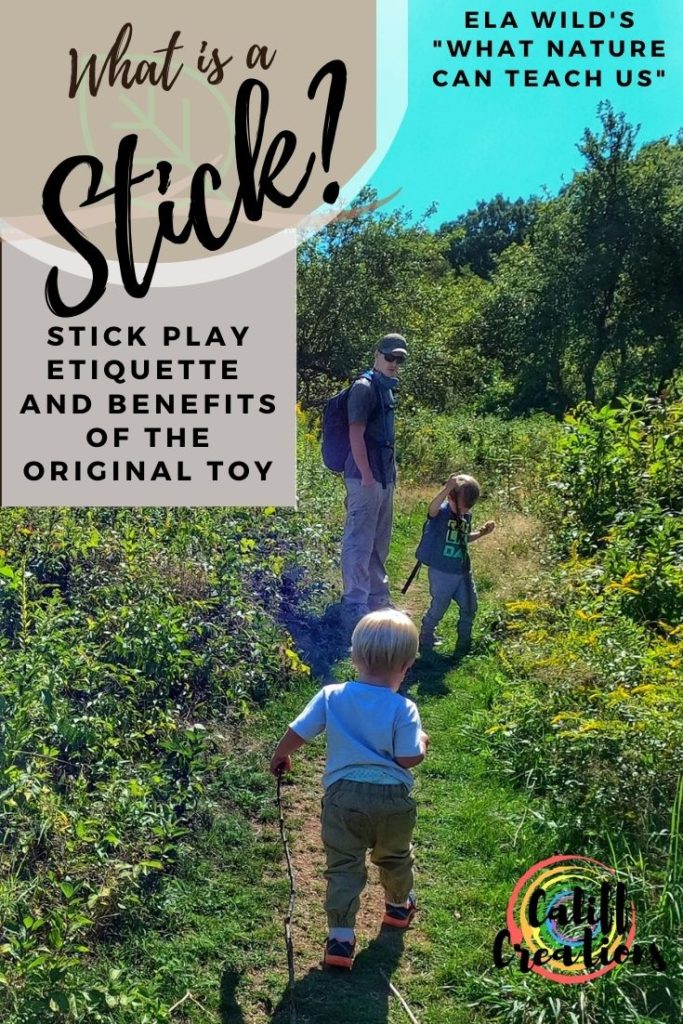
What is a stick?
A stick can be anything. That is the beautiful thing about this natural toy. When a child picks up a stick, their imagination will soar.
- They may end up fighting their way through a jungle to find a treasure at the end, using their stick to beat back the heavy vegetation.
- Maybe that stick becomes a sword and they are swashbuckling pirates on the high seas.
- It could be a magic wand or a wizard stick so they can conjure magic spells or battle a magic dragon.
- Kids can straddle a stick and ride it around like a horse, or fly through the sky like a witch on their broomstick.
- Sticks can be turned into drumsticks to create your rock concert in the woods.
- Larger sticks can be dragged behind like dragon tails.
Sticks fall into the category of loose part play. They are the ultimate toy for open-ended, free play as kids can use them to create just about anything. It forces kids to use their imagination and get creative in their play which, in turn, helps their brains develop and their creativity blossom.

Creativity with Sticks
Sticks make great craft supplies! You can glue them together to create a picture frame, a small sculpture, or an ornament to hang in the house. Paint them, build with them, glue things to them, and just let kids so wild doing what they want to it. We have done so many nature crafts, but for some reason, stick crafts are always a favorite.
Tie sticks together to create a hanging mobile. This also provides a bonus lesson on how to balance two sides so the stick mobile will hang without tipping to one side.
If you are just out in the woods, you can still get creative with sticks. Gather them up and arrange them on the ground to create a picture. I like to ask my kids to try and make something simple, like a house, by arranging sticks on the ground. They practice their creativity while also learning spatial awareness and problem-solving as they try and find the right sticks to create the picture.
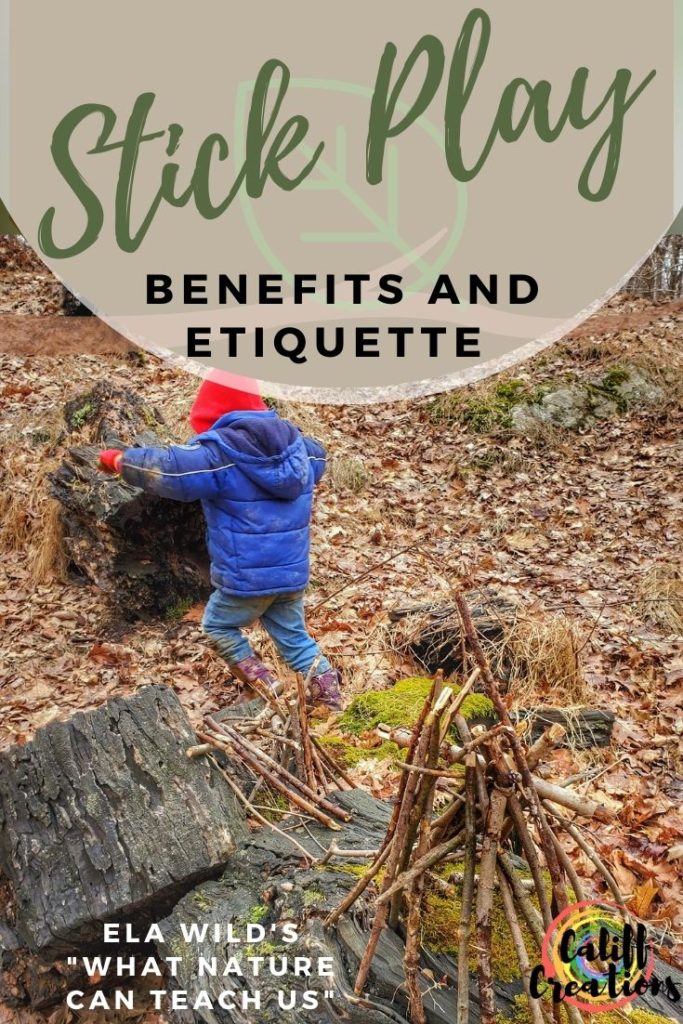
Engineering with Sticks
Have you ever heard of a stick fort? How about a fairy house? You can build both with sticks! Kids learn how to lean sticks against each other and practice basic engineering skills as they figure out how to make them stand up.
Stick Forts
These use larger branches and are a really fun place for kids to play. We built a big stick fort in the woods and my kids still love going into it just to hang out! Building a stick fort with these large sticks is a great way for kids to get some heavy play and learn the difference between lifting a big branch, versus lifting a smaller stick. Their bodies learn to gauge the weight and how to get the sticks to stay in place so that it is safe to enter the stick fort.
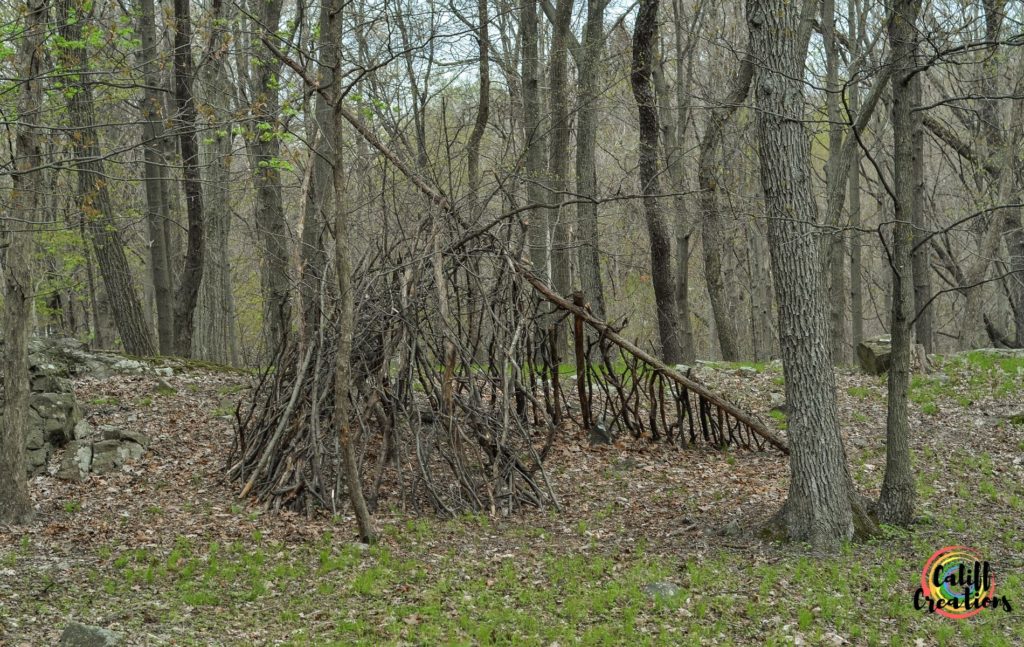
Fairy Houses
These are basically like the stick forts on a small scale. We like to build small fairy houses in the woods and it is fun to use our imagination to make up a story about who will move in.
Early Math with Sticks
You can learn math just about anywhere. Sticks provide a great tool for learning the basics and keeps a child’s attention better than a workbook. The physical activity of gathering up sticks before starting a learning activity helps so that they are more willing and able to sit down on focus on a math lesson.
Counting
After you gather up some sticks, you need to know how many you collected. Count them together. Repeat as many times as your child is interested in counting.
Sorting and Comparing Sticks
All sticks are different. That makes them a great object to practice sorting. You can sort them by length, color, weight, and even texture. This activity gets kids thinking critically and learning to examine things carefully to spot both similarities and differences between sticks.
Once kids know how to sort sticks, the natural next step is to compare them. Organizing sticks on the ground by length is a fun way to continue this critical thinking and comparison lesson. Kids have to think about each stick, compare it to the others, and determine where it belongs in the order.

Early Addition and Subtraction
Do you remember learning basic addition and subtraction with physical objects? Maybe it was 10 popsicle sticks and you would put them in various piles to create different simple addition and subtraction equations. You can do the same thing with sticks.
Place 2 sticks on the ground and count them. Then tell kids to add 2 more and count again. You just learned that 2+2=4.
Then, tell kids to remove 1 stick and count again. You just learned that 4-1=3.
You can repeat this process using any numbers as long as you have enough sticks! What a fun way to have nature teach you early math!
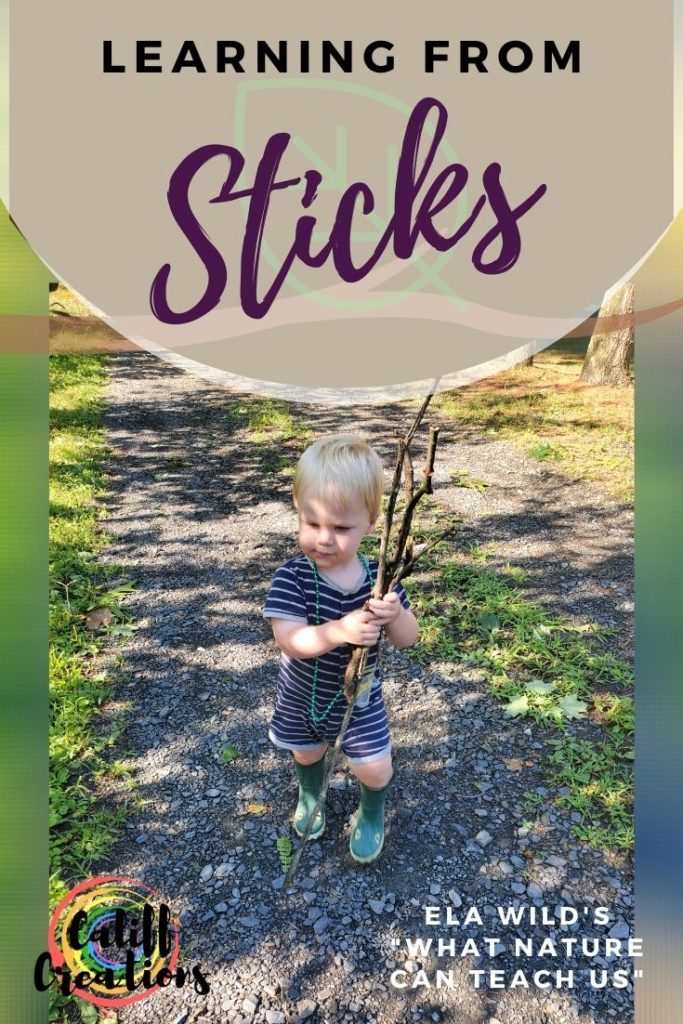
Early Literacy with Sticks
This is a subject that is on every parents’ mind as we all want our children to grow up educated. Being able to read and write properly forms the foundation of a great education which makes early literacy a crucial part of a young child’s life.
Take this lesson outside. Gather some sticks. Again, this physical activity helps prepare a young body to be more receptive to a lesson since they got all the “wiggles” out beforehand. Then, you can use the sticks to form letters on the ground! Build the alphabet out of sticks. This helps kids learn to recognize letters. I also like to tell them the sounds of each letter we create so they start to recognize that as well. We have also done this activity with numbers.
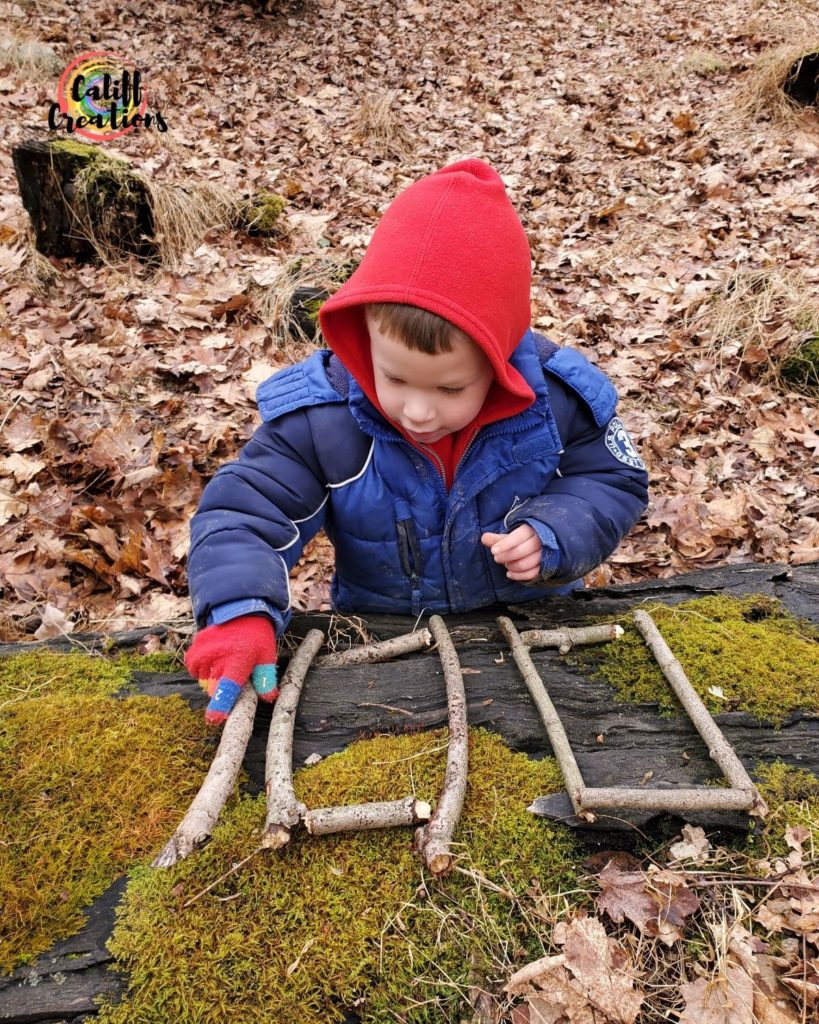
Older kids can also use a stick to practice writing letters or words in the dirt and sand. Just make sure to pick one that isn’t too long for you to handle!
Do you know what a stick is yet?
It really can be anything, which means that we can learn just about anything from them. We learn to play responsibly and to communicate with our friends to set down rules (and to stick to them). They can be a spoon as we cook up a magic potion and expand our imaginations. Just remember your stick play etiquette!

We can drag sticks, stack them, and use them in art projects.
Sticks help kids learn to hike on their own two feet as they navigate rough terrain and steep hills. Having a walking stick can be a big help!
Kids learn so much from sticks, so yes, go out and play with them. I hope now, you see how the benefits far outweigh the risks involved with stick play.
Don’t forget to follow us on Instagram for more nature play and learning.
Follow Me!



